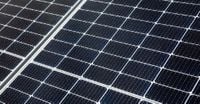Qatar is making significant strides in enhancing its electricity infrastructure and expanding its renewable energy capacity, as evidenced by two major announcements made on May 5, 2025. The Qatar General Electricity and Water Corporation (KAHRAMAA) has signed contracts worth approximately QR 3.1 billion to bolster the country's electricity framework, while QatarEnergy has launched two new photovoltaic generation facilities, increasing solar power production significantly.
At the forefront of these developments, KAHRAMAA signed four strategic contracts with notable companies, including Elsewedy Cables Qatar Company, Voltage Engineering Ltd. Co. W.L.L, Best and Betash Consortium from Turkey, and Taihan Cable & Solution from South Korea. The signing ceremony was attended by HE Minister of State for Energy Affairs Saad bin Sherida Al Kaabi, who emphasized the importance of these contracts in meeting the growing electricity demands of the nation.
“Today's signings are a reflection of our commitment to implement effective and comprehensive plans for our strategic projects that would ensure our networks' continued and sustainable ability to accommodate the unprecedented growth of the power sector and meet the increasing electricity demand,” said Al Kaabi.
Under the new agreements, KAHRAMAA will establish seven high-voltage substations and will provide 212 kilometers of underground cables and overhead lines to connect these substations. This initiative is expected to significantly enhance the reliability and capacity of Qatar's electricity supply.
KAHRAMAA President Abdulla bin Ali Al Theyab praised the collaboration with both national and international firms, stating, “We are proud to collaborate with highly qualified national and international companies, and to stress our commitment to strengthening strategic partnerships and supporting the local economy.”
Notably, Qatari companies will receive 58.4% of the total value of these contracts, which amounts to QR 1.8 billion. This allocation reflects KAHRAMAA's commitment to promoting the local private sector and aligns with Qatar's broader development vision, encapsulated in the Qatar National Vision 2030.
In a parallel effort to diversify its energy sources, QatarEnergy announced the commissioning of two photovoltaic generation facilities with a combined capacity of 875 megawatts (MW) located in the industrial cities of Mesaieed and Ras Laffan. This new capacity brings Qatar’s total solar power production to 1,675 MW.
“The construction of solar power plants is one of Qatar's most important initiatives to reduce carbon dioxide emissions, to develop sustainability projects, and to diversify electricity generation sources,” stated Al Kaabi, who also serves as the president and CEO of QatarEnergy. These plants are expected to reduce carbon dioxide emissions by about 4.7 million tons annually.
Qatar has set ambitious goals for renewable energy, aiming to increase the share of renewables in its power mix from the current five percent to 18 percent by 2030. This target was outlined in the Qatar National Renewable Energy Strategy, which was released on April 27, 2024. Currently, Qatar operates three solar facilities, including the 800-MW Al-Kharsaa plant, which began operations in 2022. Together, these three plants are projected to meet about 15 percent of total peak power demand.
Last year, QatarEnergy announced a new solar project, the Dukhan Solar Power Plan, which has a generation capacity of 2,000 MW and is expected to start operations by 2030. Despite the push for renewable energy, Qatar still relies heavily on gas-powered thermal plants, which account for over 90 percent of its total power production, translating to approximately 11.3 gigawatts.
According to KAHRAMAA, the expected commissioning of 2.2 GW of new thermal electricity generation by 2027 indicates a gradual integration of renewable energy into the power mix. “Qatar has tremendous potential to increase its use of renewable energy sources due to the high quality of the nation’s solar resource,” KAHRAMAA noted, highlighting that the country’s global horizontal irradiance (GHI) level is among the highest in the world.
As Qatar moves forward with these infrastructure projects, the emphasis on renewable energy not only aligns with global trends towards sustainability but also positions the country as a leader in energy innovation within the region. The combination of significant investments in electricity infrastructure and a commitment to renewable energy development underscores Qatar's strategic vision for a sustainable future.
In summary, the recent announcements from KAHRAMAA and QatarEnergy mark a pivotal moment for Qatar's energy sector. By enhancing its electricity infrastructure and expanding its renewable energy capabilities, Qatar is taking crucial steps towards meeting growing energy demands while also addressing environmental concerns. The collaborative efforts with both local and international companies reflect a robust approach to achieving the goals laid out in the Qatar National Vision 2030.

